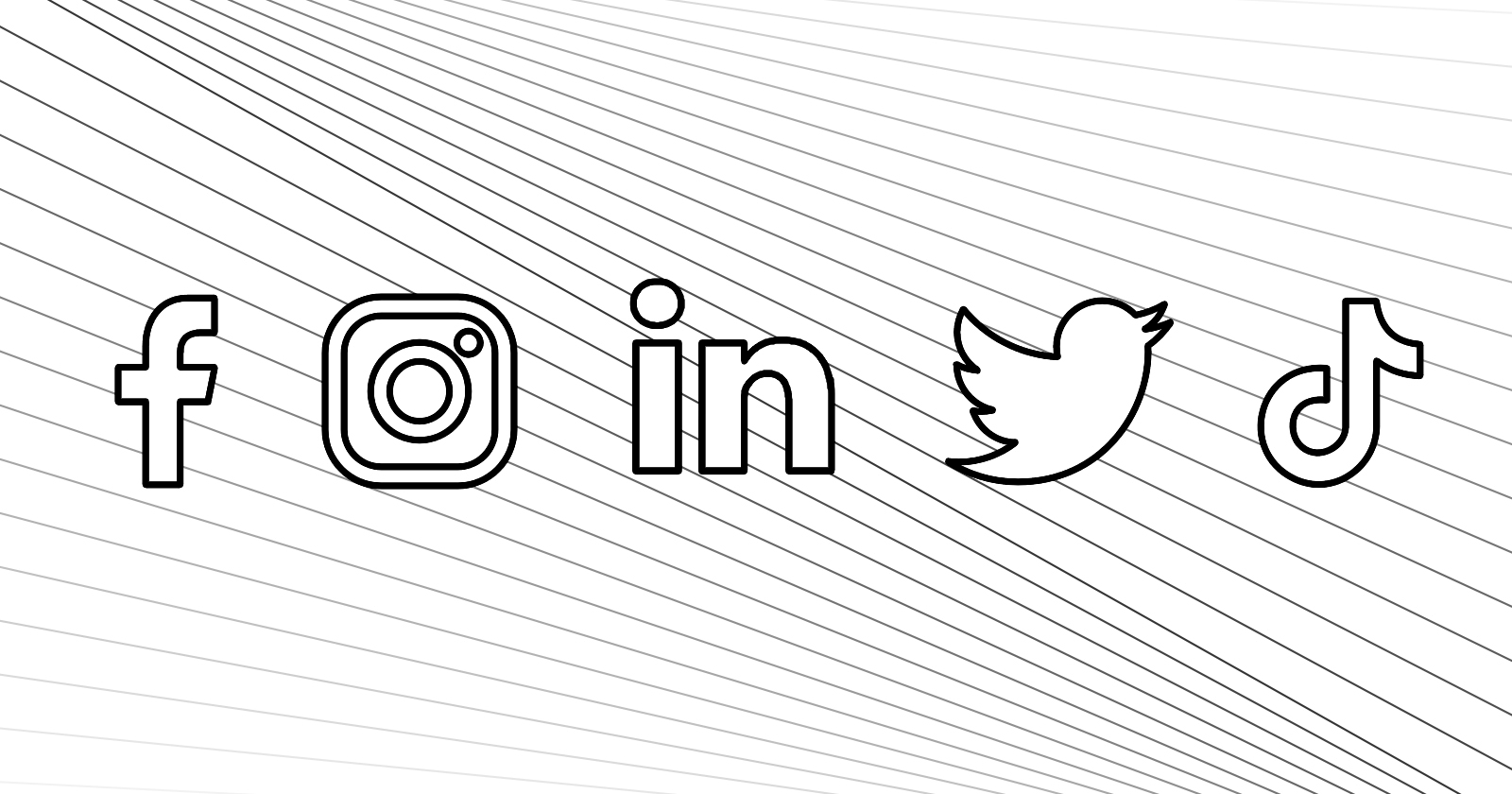What Is Social Media?
Social media is a tool that allows users to build networks and groups of contacts to manage relationships and friendships.
Individual users create a profile and post about anything they want to share with their group. They consider how to present themselves online to create a personal brand.
And, if they have a significant following, they can become ‘influencers’ to share sponsored content with their audience.
Brands can also use social media to engage their audience and customers directly.
“Social media’ refers to digital channels that allow ‘social’ user interaction and networking by sharing information through an online app or platform. An integral part of social media is the ability to ‘like’ and comment on posts creating a two-way dialogue.”
The common elements that define social media include:
- Operates through a digital app or platform
- Users create an individual profile
- Users build networks and connections with other individuals
- A platform for user-generated content
- Allows two-way dialogue with comments
How is social media different from other media?
Traditional media has always been a one-way monologic channel of broadcasting publication. The only interaction was by submitting comments and opinions by postal mail – and that was limited and controlled by the publisher.
Social media was the first time that publishing became two-way and dialogic. The traditional “one source to many users” became “many sources to many users.” As a result, the relationship between publisher and consumer switched, and the consumer became dominant with control of the relationship.
The emphasis on publishing brands became about transparency, authenticity, and accountability and no longer simply broadcasting their messaging.
Social media also allowed for a significant reach and audience size that, at one time, even the most popular publications could not achieve through physical distribution.
Other social media resources:
When Was Social Media Invented?
As precursors to what social media is today, bulletin board systems were developed in the 1970s, and Talkomatic was a multi-user chat room founded in 1973 at the University of Illinois.
If we consider the true definition of social media (highlighted above), the first online social media platform was SixDegrees.com, which launched in 1997 and achieved millions of registered users – though it experienced the limitations of an early internet.
Friendster launched in 2002 and was the first significantly popular social media platform, with a reported 85 million global users in 2008.
Timeline of the most popular social media sites and apps
| Year founded | Social Media Platform | Founder |
|---|---|---|
| 1997 | SixDegrees.com | Andrew Weinreich |
| 2002 | Friendster | Jonathan Abrams |
| 2003 | Reid Hoffman | |
| 2003 | MySpace | Thomas Anderson |
| 2004 | Mark Zuckerberg | |
| 2005 | YouTube | Jawed Karim, Steve Chen, Chad Hurley |
| 2005 | Aaron Swartz | |
| 2006 | Jack Dorsey | |
| 2009 | Brian Acton, Jan Koum | |
| 2010 | Ben Silbermann | |
| 2010 | Kevin Systrom | |
| 2011 | Snapchat | Evan Spiegel |
| 2011 | Google Plus | Bradley Horowitz |
| 2011 | Twitch | Justin Kan |
| 2015 | Discord | Jason Citron, Stan Vishnevskiy |
| 2017 | TikTok | Zhang Yiming |
Read more about social media platforms
Types Of Social Media
The predominant types of social media include:
Social Networking
The original social media platforms focused on networking and user interaction, with channels facilitating this among friends, peers, or industry professionals. Posts are mainly in written format and include shared images or videos. Social networking platforms are considered the original and established social media channels, and have strong user bases and brand adoption. The demographic is generally older, including Baby Boomers and Generation X. Younger generations, such as Generation Z, opt for the newer releases and evolutions of social media, such as TikTok.
Examples: Facebook, Twitter, Linkedin
Photo Sharing
Visual apps predominantly focus on sharing images. Photo sharing apps originally focused solely on images, but most have expanded to include video and ephemeral content like Stories.
Instagram has become one of the strongest social media platforms for brands and advertising. It’s also popular with influencers.
Video Sharing
Different demographics usually adopt different social media apps and platforms for sharing videos; for example, TikTok has a strong base of Gen Z users.
YouTube is one of the strongest channels for brands to build an audience and has attracted a considerable influencer base.
Bookmarking
Bookmarking communities are focused on saving or sharing links. At one time, sites such as Digg and StumbleUpon dominated bookmarking.
Pinterest is mainly used by a female demographic to curate content in fashion, food, decor, wedding, workout, and DIY-related pins.
Examples: Pinterest
DiscussionForum
These channels take a community approach to asking questions or sharing ideas to stimulate discussion. These platforms are great for doing research and getting feedback.
Reddit is well known for its strong anti-advertising users, so brands should be cautious before trying to leverage for any self-promotion.
Read more about alternative social media platforms
Why Is Social Media Important?
Social media has been a powerful disruptor and has considerable influence in society, with over half of the global population active (see below).
That size of potential audience and influence cannot be ignored.
Social media channels allow individuals access to a huge audience with almost no barriers to entry to build their personal brands as influencers.
Brands can also reach their audiences and target a niche selection of individuals to build communities and then project laser-targeted messaging, all at minimal costs.
However, with that level of influence also comes responsibility. Just under half of U.S. adults get their news from social media, with Facebook being the most used site. Meanwhile, 94% of journalists use social media for their jobs, with Twitter used the most.
Social media companies hold considerable power to influence the population. As history has shown us, news feeds can be manipulated by bad actors to proliferate misinformation.
Read more about why social media is important for your business
Social Media Effects And Mental Health
Social media has many positives and benefits that allow people to connect with others and share their thoughts and information. On the other side, social media has negatives, such as the spread of misinformation and online bullying.
Like any tool, social media is only as effective as how people use it, and over the last few years, there has been more awareness of the impact on mental health after users have reported mental health issues.
Social media apps have evolved over time to be as addictive as possible, mostly by encouraging people to spend more time on them. “Likes” and other signs of social approval offer instant dopamine hits, and. the fear of missing out (FOMO) encourages users to be always online, creating a culture of digital overwhelm where it’s difficult to switch off.
These factors combined all emphasize that brands to be aware of changing regulations and uphold social responsibility.
Read more about social media algorithms
Social Media Statistics And Usage
As of 2021, 84% of the U.S. population uses at least one social media network. China alone has 1 billion social media users, and 4.65 billion people use social media worldwide. That’s 58.7% (more than half) of the global population.
In 2021, Facebook had 2.9 billion global monthly active users (MAU) and annual revenue of $85.96 billion.
Read more social media statistics
Social Media Marketing And Strategy
Social media marketing allows businesses to interact directly with their customers and audience. The significant reach of social media platforms also allows brands access to potential niche audiences for targeted marketing.
Interaction on social media can build ongoing relationships and manage customer services, but it can sometimes also drive traffic and awareness back to a website and landing page.
A good social media strategy can:
- Distribute brand content and expand the lifespan of on-site content
- Raise brand awareness and establish authority in a niche
- Reduce reliance on search engines for online visibility
- Increase traffic to a website
Integrating a network of influencers into a marketing strategy allows any brand access to established audiences. It can also be leveraged through influencer endorsements on social media channels. Like celebrity endorsements, this form of social media marketing can be especially powerful because it offers trust and social proof.
Read more about social media strategy
Read more about influencer marketing




